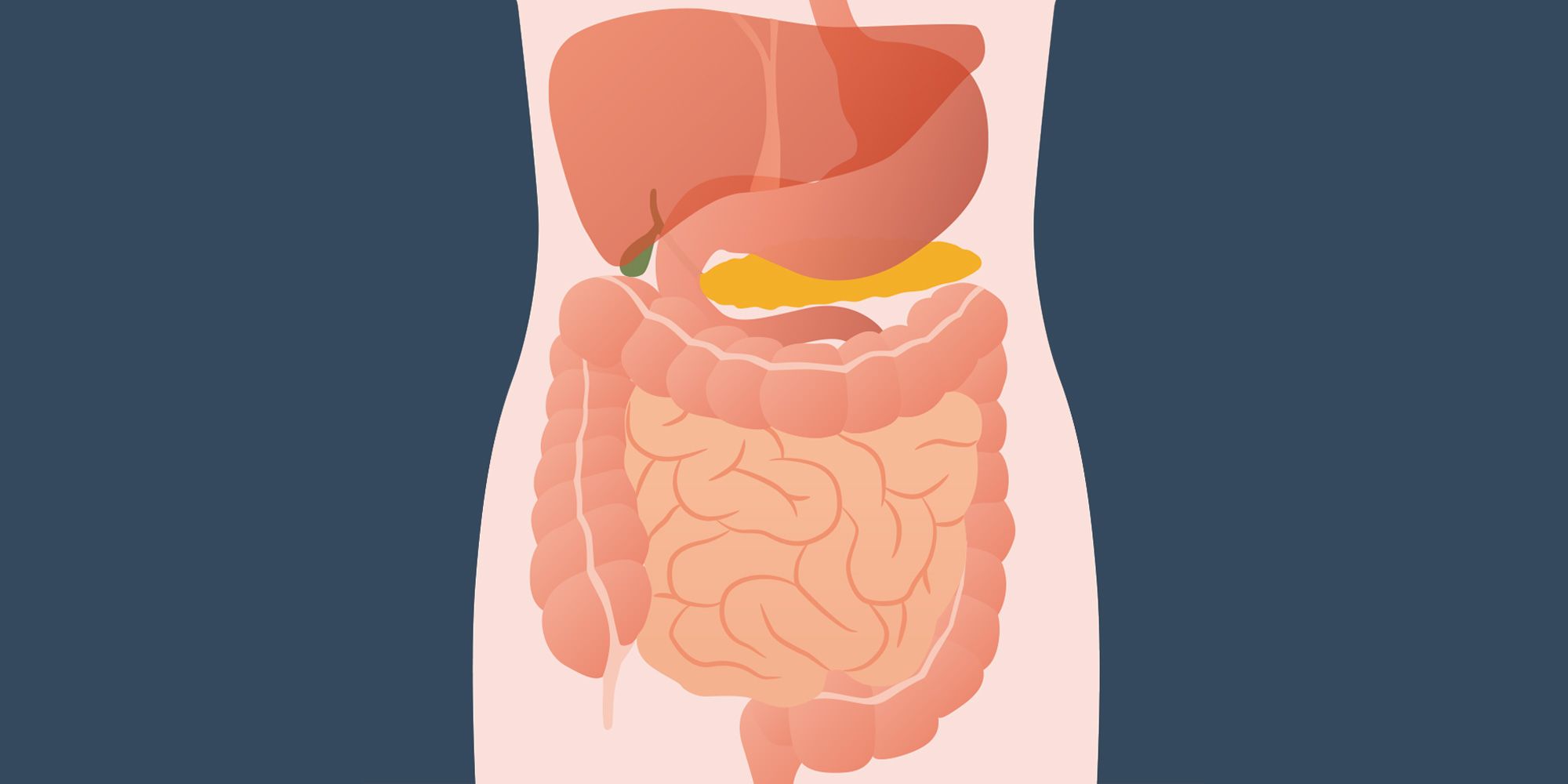“Food is fuel.” On the surface, that’s a statement you can get behind. After all, food does fuel your workouts and your daily life. But for some people, certain foods may drag them down rather than pump them up.
In cases of food allergies, intolerances, or sensitivities, they may provoke unpleasant symptoms such as bloating, gas, severe diarrhea, constipation, unexplained changes in weight, or nutritional deficiencies, says registered dietitian Maxine Yeung, MS, RD, CPT, founder of The Wellness Whisk. And sometimes, they may also cause non-GI woes such as headaches, migraines, skin rashes, acne, joint pains, mood changes, low energy levels, runny noses, hives, and itchy eyes, says registered dietitian Kerry Clifford, MS, RD, LDN, with Fresh Thyme Farmers Market.
“Everybody’s body responds to foods differently,” Clifford says. “Sometimes, our body doesn’t necessarily love every food we eat or our immune system might recognize something as a ‘foreign invader.'” While it’s possible to have a food allergy, sensitivity, or intolerance to any given food, the most common culprits include alcohol, coffee, corn, dairy, eggs, peanuts and tree nuts, shellfish, soy, and wheat. (Yes, even incredibly healthy foods can cause issues for some people!)

Since there are so many possibilities that could be to blame for your body’s distress, figuring out which food (or foods) that are actually at fault can be a little tricky. One common way to ID the problem? Performing an elimination diet, which, yes, involves eliminating certain foods from your diet only to gradually reintroduce them to identify the specific trouble makers. But those are just the nuts and bolts.
If you’ve been suffering from any, if not many, of the above symptoms (bloating and gas and diarrhea, oh my!) an elimination diet probably sounds like a total saving grace. But walk, don’t run. Unfortunately, it’s not as simple as ditching ice cream for a few days and, if you feel less bloated, assuming you’re lactose intolerant. Instead, done right, an elimination diet requires precise planning and monitoring (and the help of a professional).
Before you start slashing food from your repertoire on your won, there’s quite a bit of info you should know. So, pull up a chair and get comfortable—elimination diet 101 is in session.
What is an elimination diet?
Despite being called a “diet,” it has nothing to do with weight loss or dieting in the traditional sense. Rather, an elimination diet is a two-part process lasting anywhere from three to eight weeks.
First you remove potential food triggers and then carefully add them back into your diet to determine whether they’re to blame for your reactions, says WH advisor Samantha Nazareth, MD, a gastroenterologist who practices in New York City. “Sometimes symptoms, which range from belly pain to nasal congestion, can be delayed, therefore reintroduction of each food group has to be for at least three days.”

Yeung adds, “Once [triggering] foods are identified, we can modify an individual’s diet to help improve their symptoms and other body functions such as digestion, absorption, microbial balance, and inflammation.”
In addition to just a general elimination diet that Dr. Nazareth and Yeung describe, there are also specific types of elimination diets such as a low FODMAP diet, which is used for patients suffering from irritable bowel syndrome (IBS).
“The low FODMAP diet eliminates certain short chain carbohydrates—gluten, lactose, fructose, and sugar alcohols—that ferment in our gut and can cause bloating, abdominal pain, diarrhea and/or constipation,” says Liz McMahon, MPH, RDN, a gut health-focused dietitian in Philadelphia.
According to studies, patients with IBS don’t absorb short-chain carbs, which can be a reason why they experience gas, severe bloating, and altered bowel habits (think: diarrhea, constipation, or both).”Eliminating the FODMAPs allows them to first of all, feel better, but then add them back in slowly to figure out what specific carbs/foods are causing their issue,” McMahon adds.
Can I do an elimination alone or do I need help from a pro?
Before undertaking an elimination diet, consult a professional so they can ensure that you’re conducting the diet effectively and that you’re still able to meet your nutritional needs, Clifford says. After all, if you decide to try cutting out gluten, it’s easy to not get the fiber you need. And if you eliminate dairy, you could be putting yourself at risk of too-low vitamin D and calcium levels. Your RD won’t let those issues happen.
And the same goes for more specific elimination diets such as a low FODMAP diet—best to do so under the care of a physician and/or nutritionist.

It’s also important to talk to your doctor about any issues that you’ve had in the past (or currently have!) with disordered eating or anxiety, Yeung says. Especially in those with a tendency to control their eating, an elimination diet may trigger food restriction or a hype-focus on “good” and “bad” foods, and your health professional can help you to ensure that you follow your elimination diet in the healthiest way possible, both physically and emotionally.
How should I begin an elimination diet?
“Before starting an elimination diet, keep a food and symptom diary to help identify patterns between eating habits and symptoms,” says Yeung. This will help you and your healthcare professional figure out which food or foods you should try to eliminate.

For example, if you notice that you regularly get itchy after eating walnuts and almonds, you might decide that you want to try eliminating tree nuts. It’s totally possible that you will decide to eliminate multiple foods or types of foods.
The important thing is to eat normally and thoroughly document both everything you eat and how you feel after eating it. Track for at least a couple of weeks before making any decisions about what you’ll try cutting.
The second you spot a potential link in your log, it can be tempting to jump right into your elimination diet. Don’t. Instead, keep eating normally, track your symptoms, and start planning. On day one of your diet, you should feel knowledgeable about the exact foods you’ll need to avoid, prepared with lots of well-rounded recipes, and ready to read food labels with confidence, says Meghan Sedivy, RD, LDN, a registered dietitian with Fresh Thyme Farmers Market.
Okay, so I’ve kept a food journal for a few weeks—now what?
When it comes to picking an actual day to start, choose a time when you know that you will easily have complete control over what you do (and don’t) eat. So, no, vacation isn’t the best time to try out something like this.
Once you do choose a time to press play on this program, make sure to avoid making simultaneous lifestyle changes. “I’ve often seen people make many other lifestyle and medication changes [at the same time that they start an elimination diet],” says Yeung. “This makes it much more challenging to determine dietary sources of the symptoms.”

For example, if you start taking probiotics at the same time you eliminate soy, it will be hard to know if you’re feeling differently because of the supplement or because of the elimination, she says. During your elimination diet, it should be your only lifestyle change in progress.
And when this kick-off day finally arrives, go ahead and eliminate all food and food groups at once. Again, it’s important to do this with a doctor or RD’s supervision. After all, if you’re cutting dairy, gluten, shellfish, and nuts…getting the nutrients you need is going to require some help, says Sedivy.
Umm, how can I make sure to get all my nutrients if I’m not eating so many things?
Hey, you—breathe! It’s a lot. But keeping up your intake of essential nutrients while on an elimination diet really isn’t as hard as it might seem.
In addition to working with a pro like a dietitian or doc, start (if not continue!) taking a standard multivitamin that doesn’t have an added “‘superfoods’ or food powders,” as they may actually have the ingredients you’re trying to avoid, McMahon says. Depending on what food(s) you’re eliminating, it’s not a bad idea to go for a vitamin that has calcium with vitamin D if you’re ditching dairy or one with B-vitamins if you’re eliminating wheat and gluten.

McMahon also encourages elimination dieters to keep it as simple as possible, to helps de-stress the whole process by making sure each meal has three basic components: protein—lean options like chicken or fish—healthy fats—avocado or EVOO—and carbohydrates—veggies like spinach or broccoli or grains like brown rice or quinoa. Together, these components will keep you energized and feeling satisfied, which is a must especially when you’re eliminating foods.
How long does an elimination diet last?
There’s no hard-and-fast rule as to the exact length of an elimination diet. It can technically last anywhere from three to eight weeks, which “gives the body time to adjust to a new diet and also allows the gut lining—the barrier from what we put into our mouths and the rest of the body—to regenerate,” Dr. Nazareth says.
Irritants like food allergens can damage the lining, weakening the “security system” so that things that shouldn’t enter the body (think: bugs) can now do just that and cause inflammation, bloating, gas, diarrhea, Dr. Nazareth explains.

That being said, your doctor or dietitian can help you determine the appropriate time period for your elimination diet, which will largely depend on the food(s) you’re cutting out. However, your body requires a good week or two to recoup from any potentially triggering foods.
It will be tempting to quit the process early, but Yeung says it’s important to stick it out. “Many people stop the elimination diet early because they are feeling better shortly after starting, but by doing this, you risk eliminating foods that you do not necessarily need to because you didn’t go through the reintroduction phase,” she says. “This could cause imbalanced diets and stop you from eating foods that you may really enjoy and can tolerate.”
When can I start reintroducing foods—and how?
After eliminating everything that’s a potential trigger for you, begin the challenge phase of reintroducing one food group at a time. I repeat: one. at. a. time. You do this with the intention of provoking symptoms, Yeung says. But if you find that the food that you reintroduced has caused issues, then best to hold off eating it and seek medical advice.
While you’re at it (read: throughout the entire process of elimination and reintroduction), remember to log everything.
Hey, hey, I know what you’re thinking: again with the logging?! But take it from the pros like Clifford who emphasizes the importance of tracking, tracking, tracking. “Write down what foods you ate, how much, and where you got it,” she says.
Also take time to reflect on how you feel after eating, whether there are any changes to your digestion or energy levels, and whether you can tolerate certain serving sizes, but not others. You could keep this record in a journal or on your phone or download a food tracking app.
What about the foods that still bother me? Should I keep eating them?
It’s important to know if you have a food allergy, intolerance, or sensitivity—but it’s even more important to know how to respond to that information.

For example, she says, if you’re lactose intolerant you won’t cause harm to yourself if you eat lactose. (Although you might experience some uncomfortable side effects like gas or diarrhea.) But if you have celiac disease (confirmed by a intestinal biopsy) and eat gluten, you could harm your gut’s ability to properly take in the nutrients your body needs, thereby putting you at risk for thereby putting you at risk for vitamin deficiencies, Dr. Nazareth explains. Your MD or RD can help you fully understand your condition so that you can keep your body safe and healthy.
Source: Read Full Article
